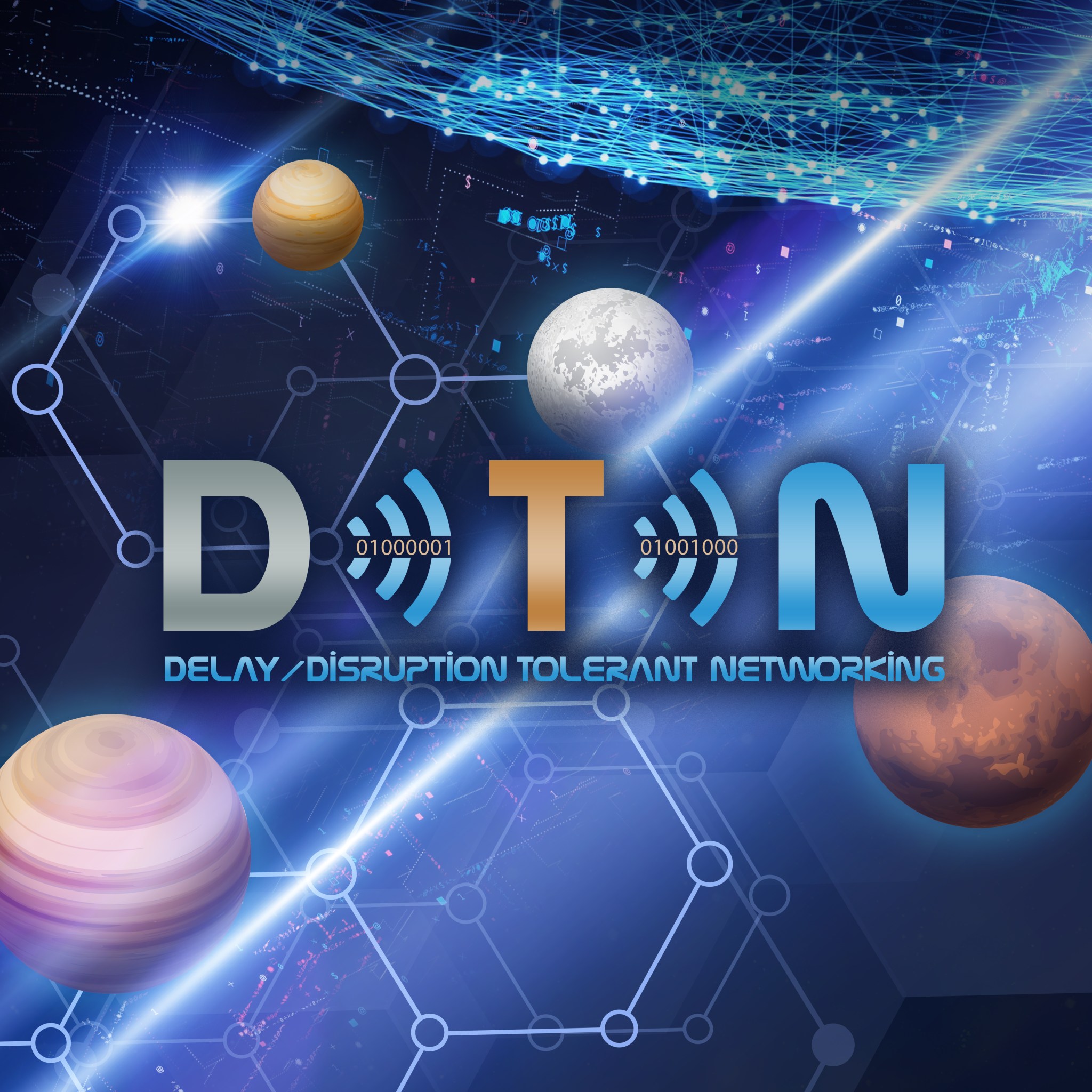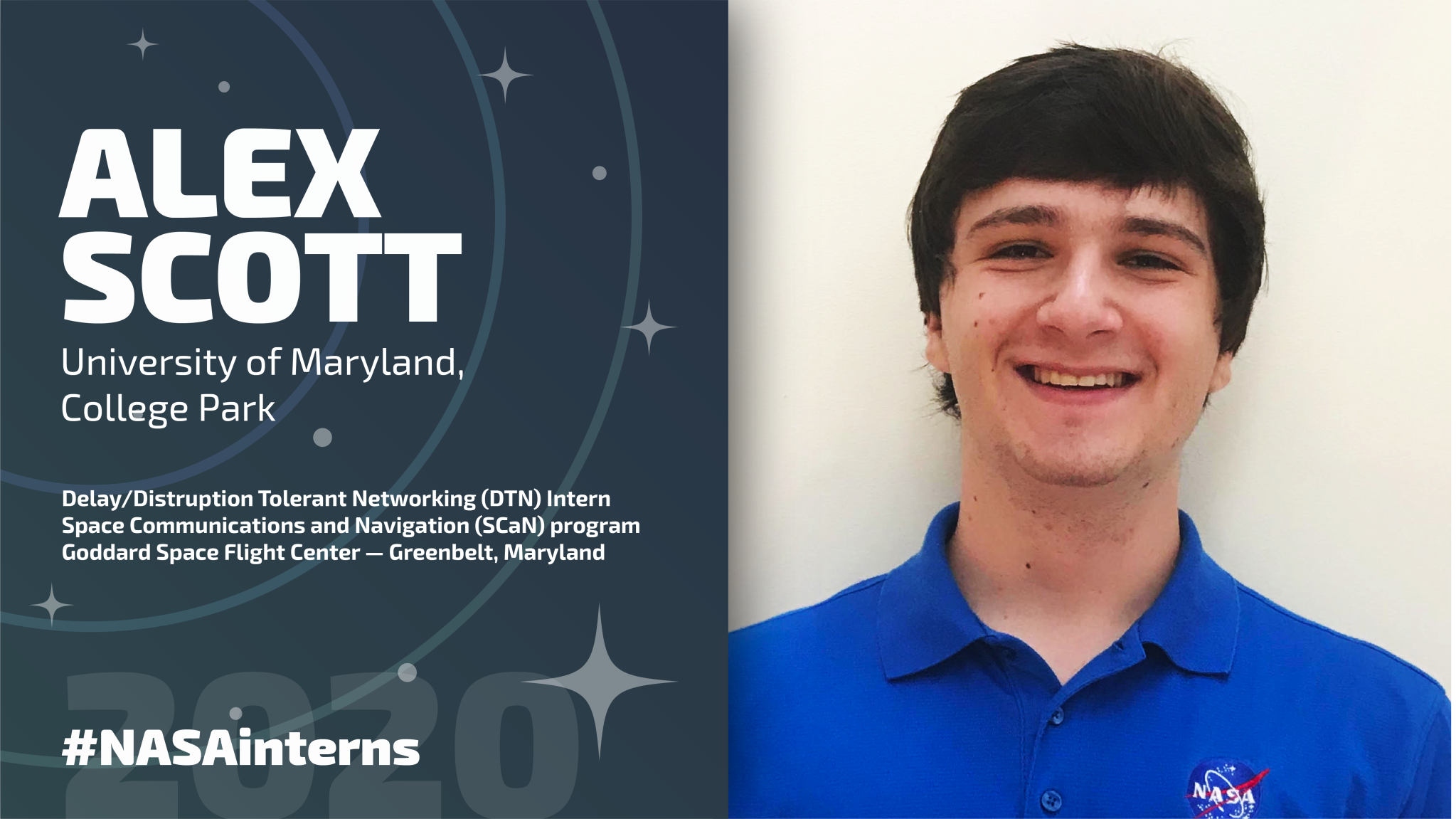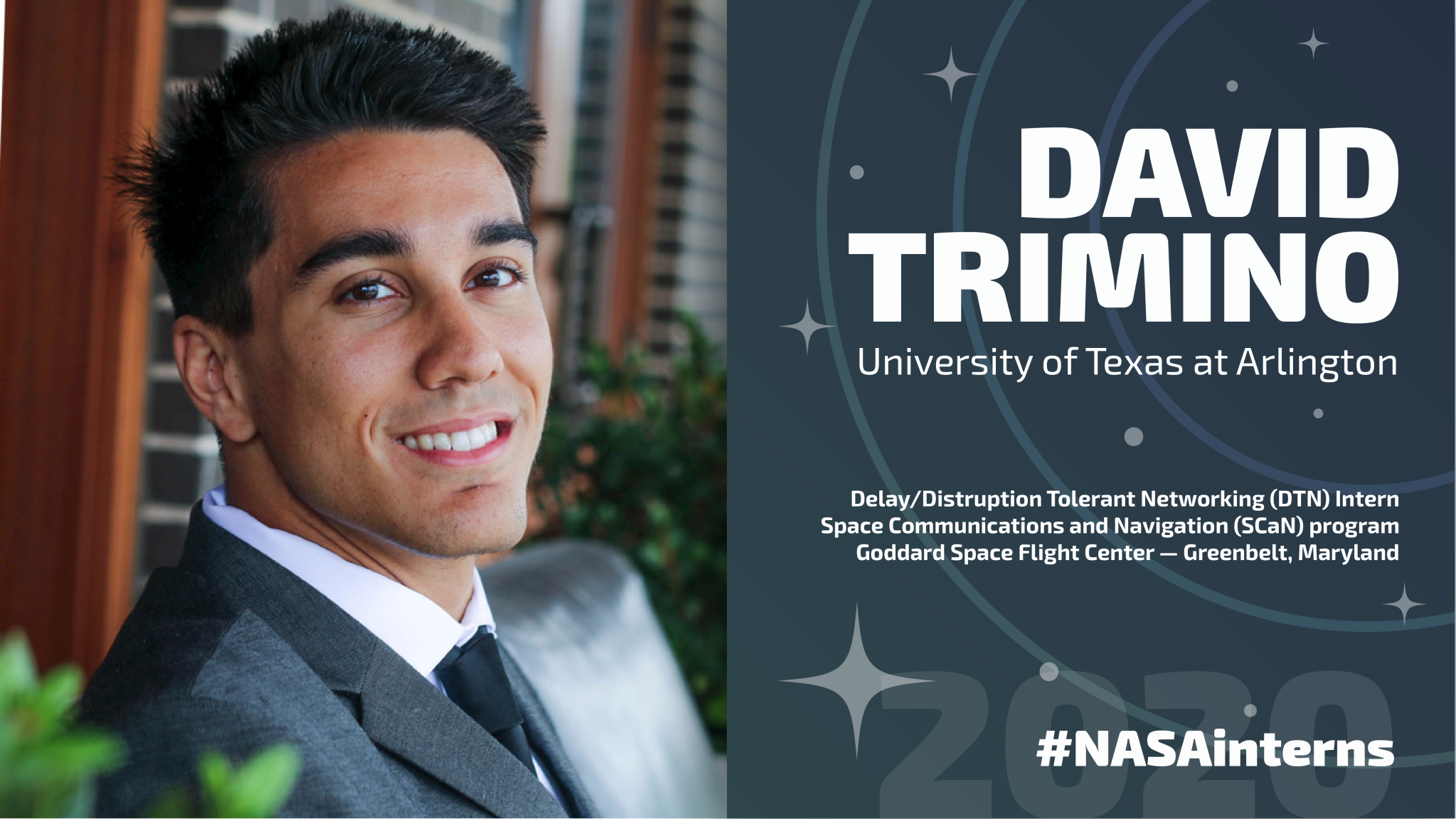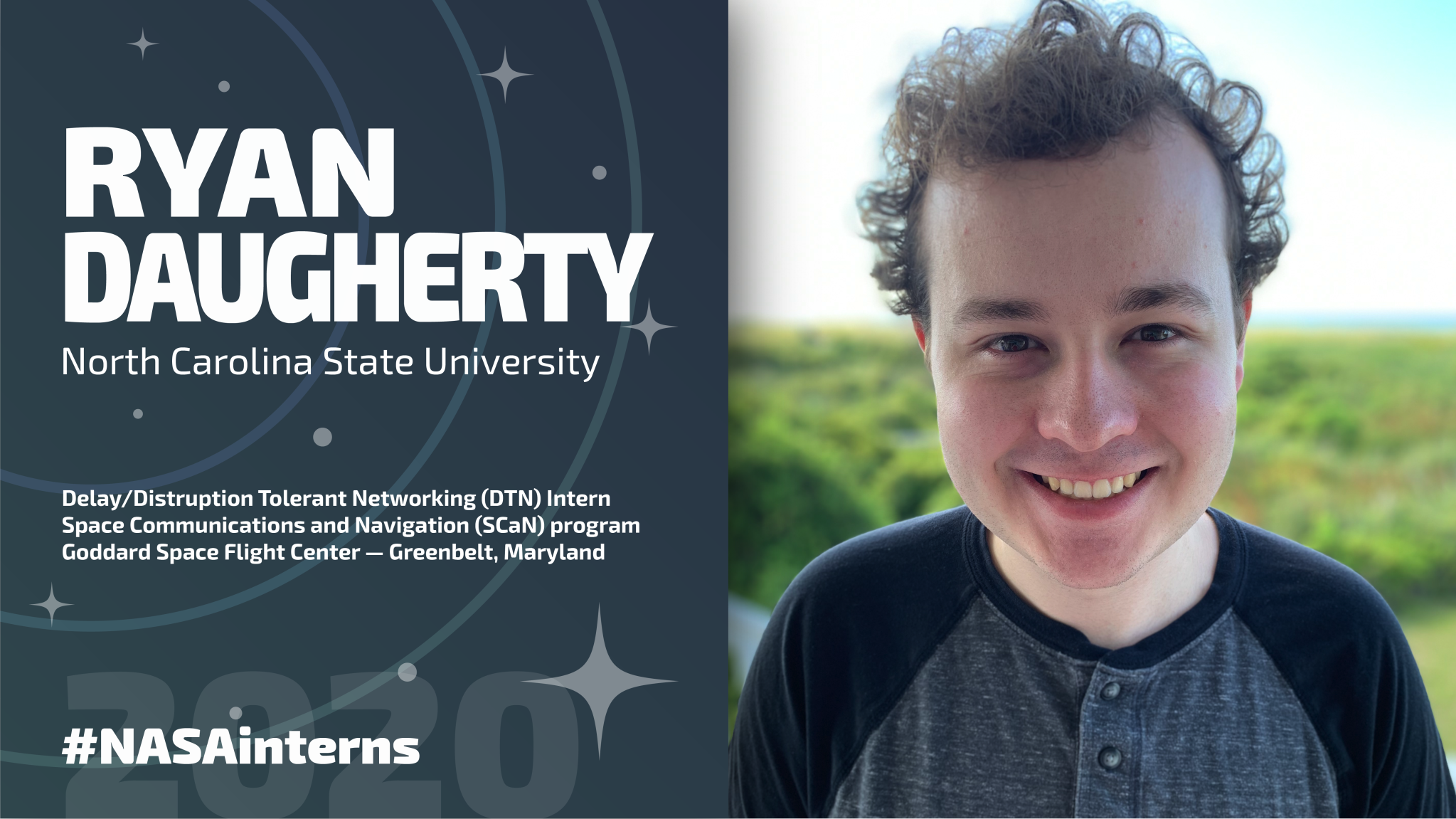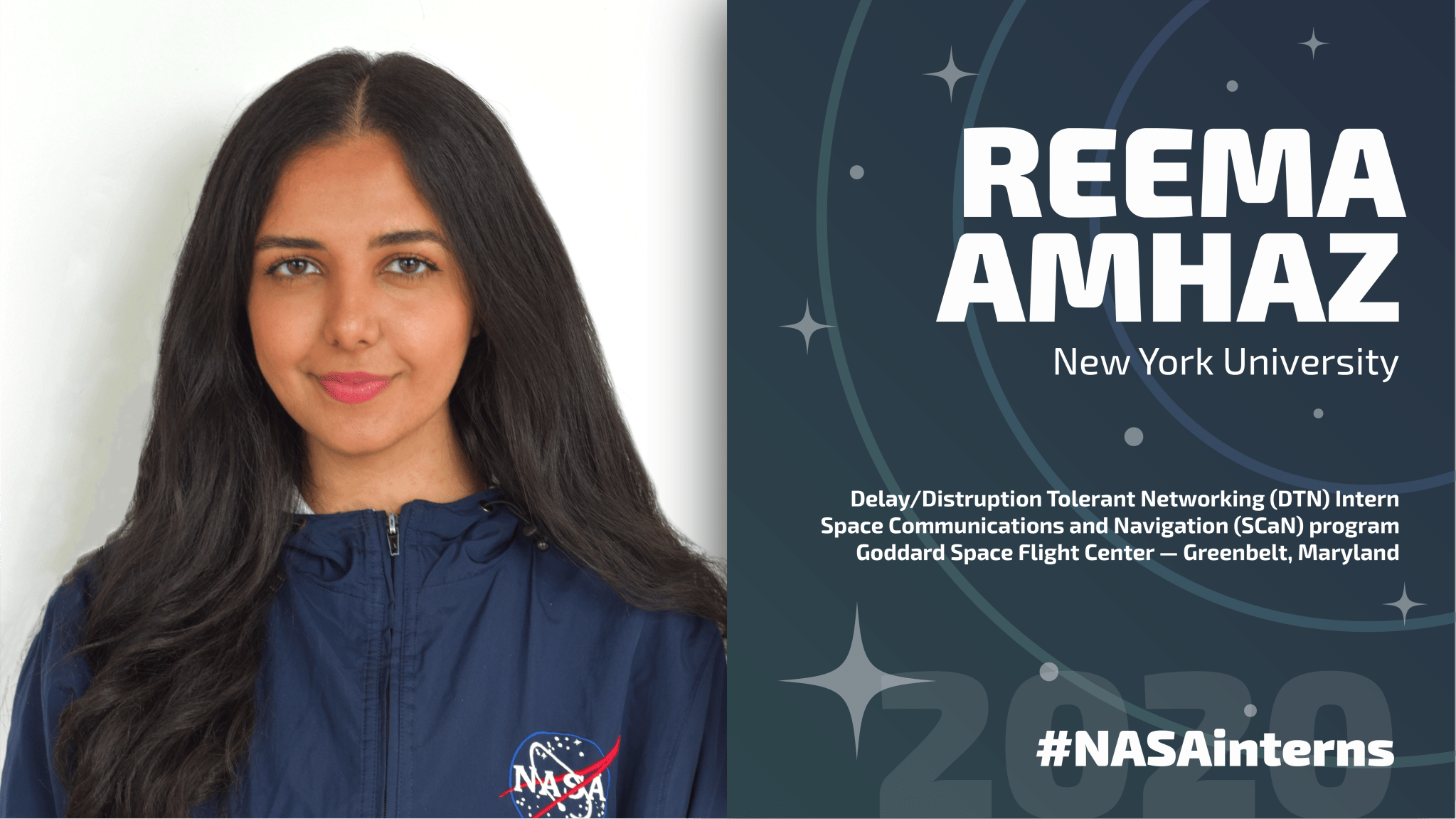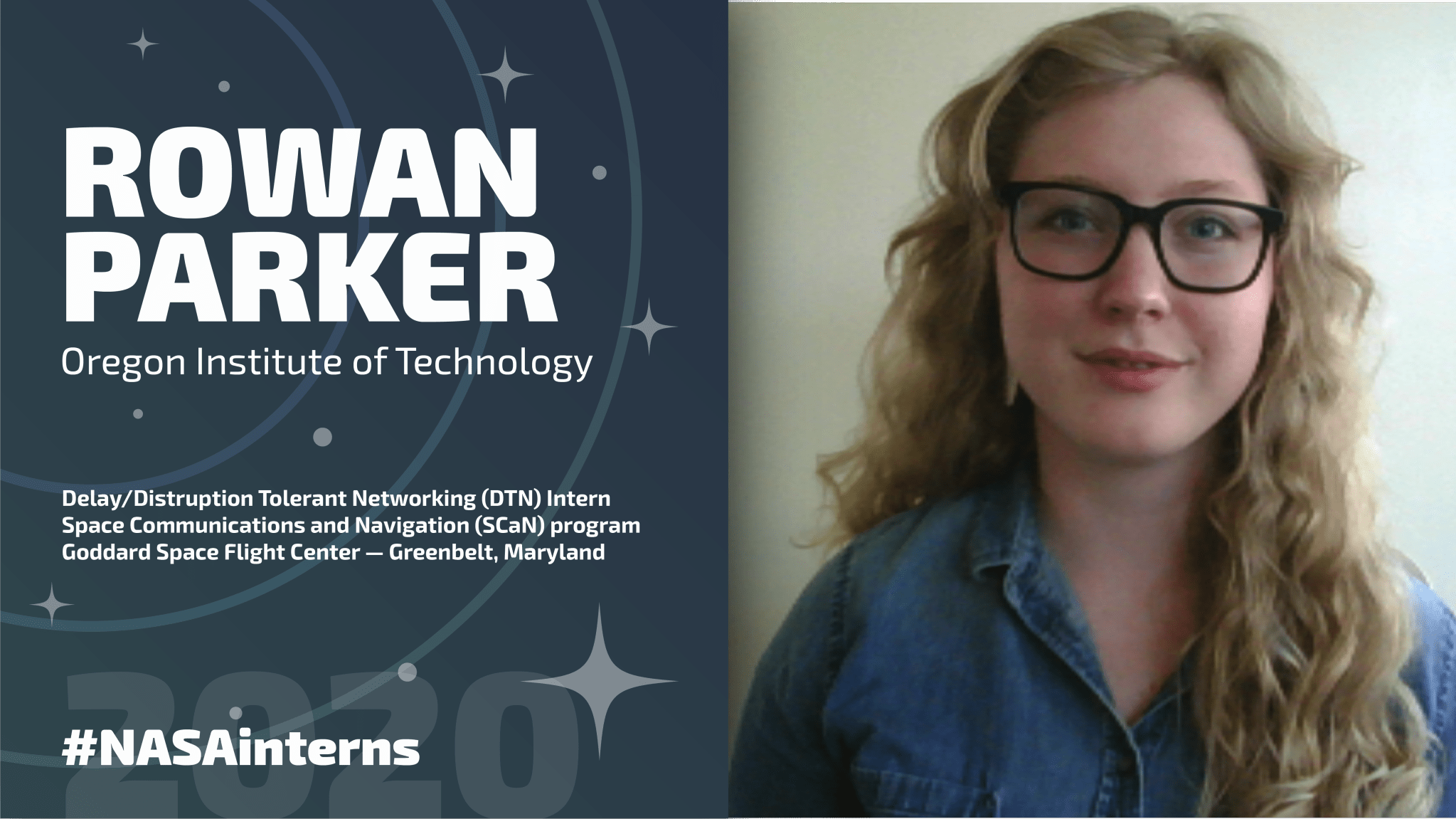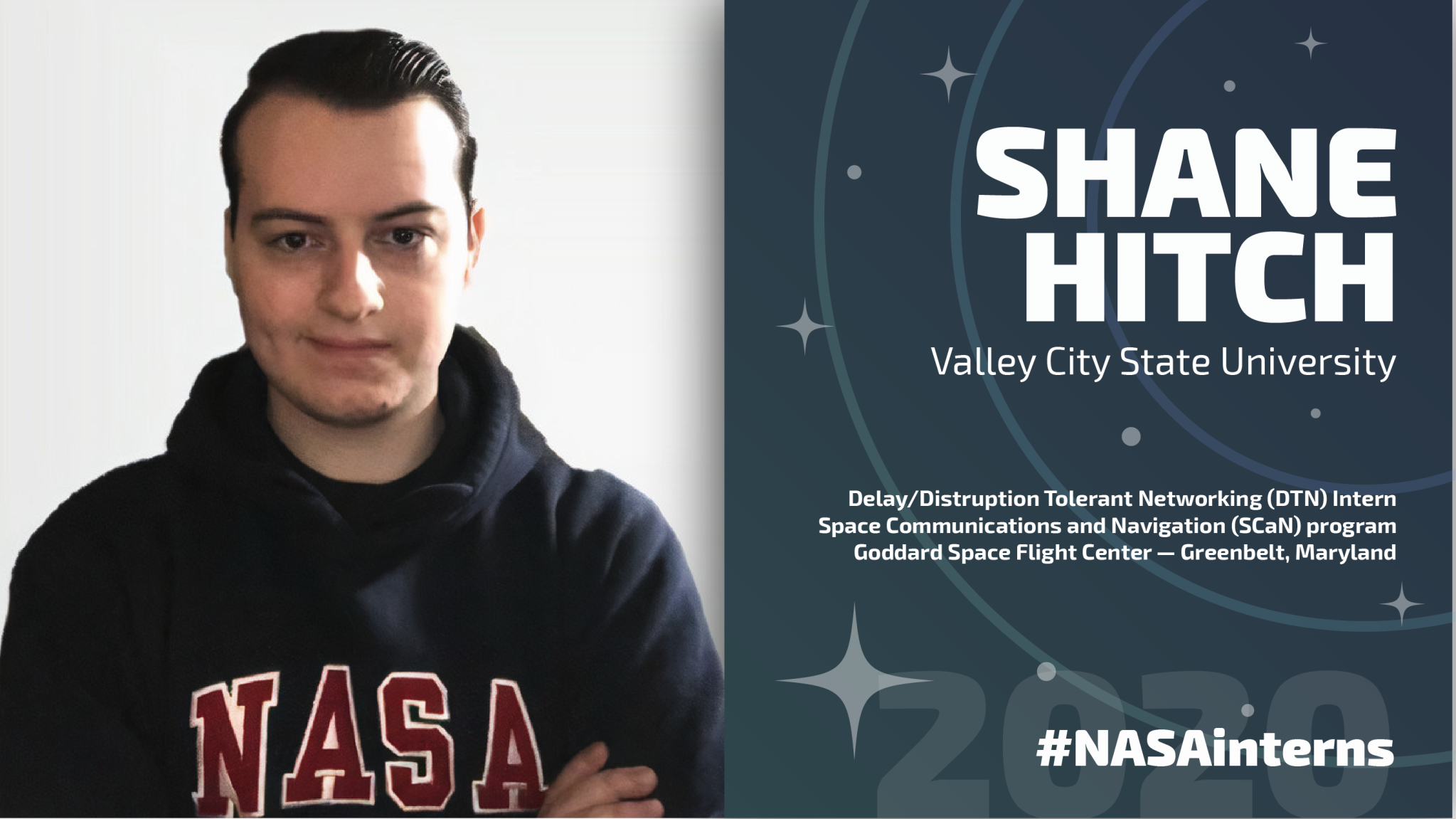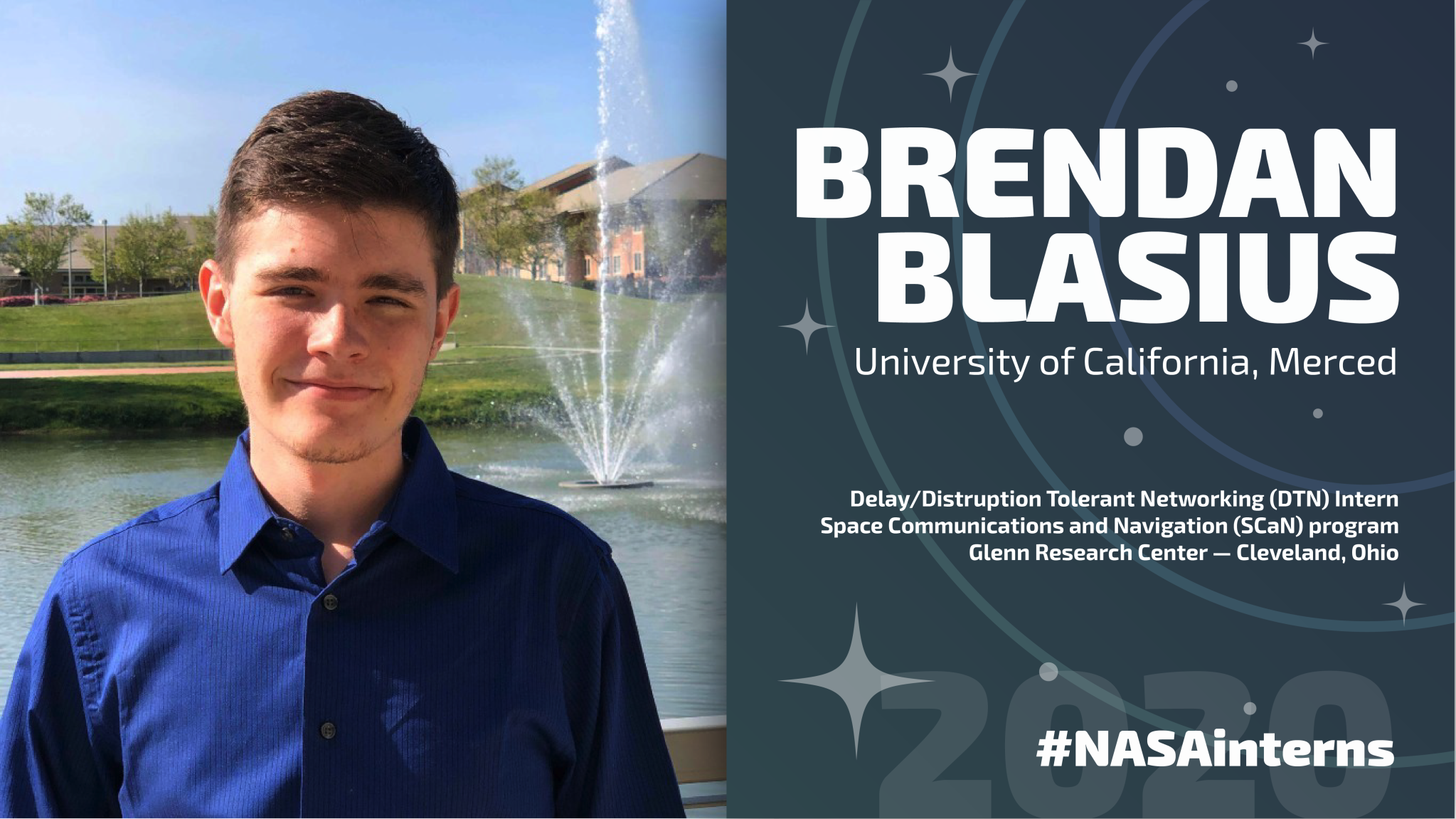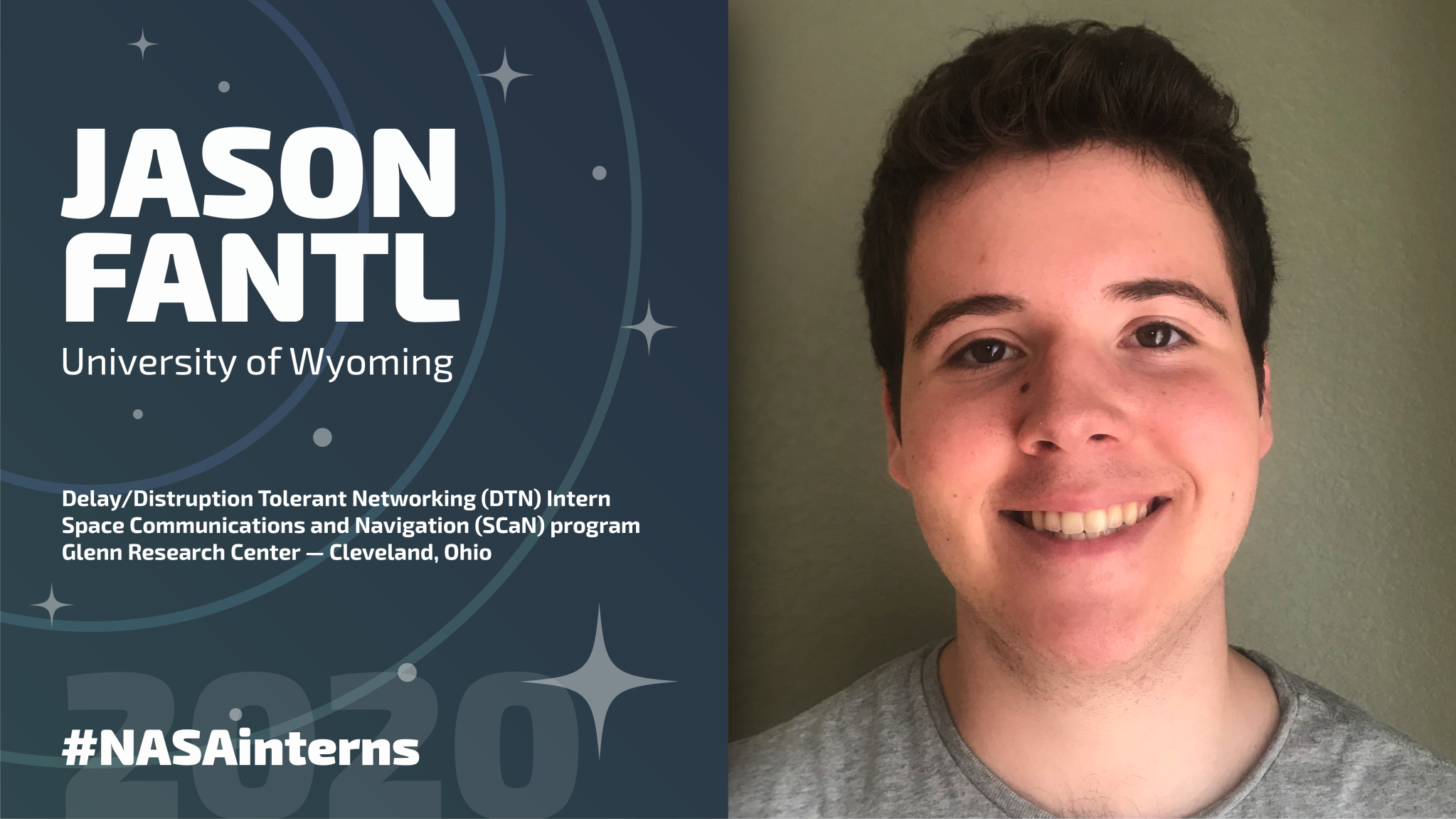In 2020, a cohort of NASA interns helped develop network protocols that will extend internet-like services deep into the solar system.
The Space Communications and Navigation (SCaN) program interns at NASA’s Glenn Research Center in Cleveland and Goddard Space Flight Center in Greenbelt, Maryland, made invaluable contributions to Delay/Disruption Tolerant Networking (DTN), which will revolutionize space communications. DTN will serve as the backbone for LunaNet, a communications architecture that will empower NASA to establish a sustained presence on the Moon as part of the Artemis program.
What is DTN?
The network protocol that enables the terrestrial internet, Transmission Control Protocol/Internet Protocol (TCP/IP), relies on an uninterrupted connection for data transference. In space, missions can often have long delays, or latency, and disruptions due to orbital dynamics that make using TCP/IP challenging. DTN will make NASA’s networks flexible enough to overcome these issues.
For example, a transmission sent to Mars from Earth can take up to 20 minutes to arrive. Confirming receipt of the message takes another 20 minutes. Using conventional TCP/IP, missions would have to wait 40 minutes to confirm receipt of each piece of data before transmitting the next. With DTN, NASA can send multiple data bundles consecutively and confirm receipt of multiple bundles with one reply.
In another example of the system’s utility, a rover on Mars has a clear connection with a relay satellite, but the relay satellite doesn’t have a clear link to Earth. Using TCP/IP, the mission would need to wait until both links became available, but with DTN the rover can send bundles to the relay satellite and the relay can hold onto the data until it has a link home.
DTN’s benefits won’t just impact distant missions at Mars. Spacecraft near Earth — like the International Space Station and the upcoming Plankton, Aerosol, Cloud, ocean Ecosystem (PACE) mission — are using DTN to enhance their capabilities. Remote places on Earth with limited connectivity, like McMurdo Station in Antarctica, can also benefit from DTN.
DTN Interns at Goddard Space Flight Center
At NASA’s Goddard Space Flight Center, six SCaN interns worked on a diverse set of projects that rapidly advance the technology and infuse it into mission architectures.
Alex Scott
Alex Scott, a seasoned NASA intern, studies computer science at the University of Maryland, College Park. His previous SCaN internships focused on DTN network management. This summer, Scott served as a liaison for new interns working with DTN. Scott familiarized interns with DTN and taught them how to use DTN software based on knowledge accrued during previous internships at Goddard.
Additionally, Scott laid the groundwork for the intern’s projects by building reference DTN software configurations, which helped him explain DTN to the new interns while jumpstarting their projects.
David Trimino
David Trimino, a computer science student at the University of Texas at Arlington, helped implement a DTN testbed. The virtual environment simulates communications between a ground DTN node and a flight DTN node on a high-altitude balloon or a CubeSat. Trimino’s testbed and accompanying user guide will allow NASA engineers to experiment with DTN capabilities.
“I’d never really dealt with a network like this before, but I got a really solid introduction to how these nodes communicate,” said Trimino. “I got to really see what’s under the hood.”
Ryan Daugherty
Ryan Daugherty, a computer engineering student at North Carolina State University, catalogued the required installation process for a DTN ground node. This program repository and related documentation will simplify implementing new DTN ground nodes, making it more straightforward for new users to adopt DTN.
“It can take hours or days to install and troubleshoot a new DTN ground node, but cloning a node using this documentation could take as few as 15 minutes,” said Daugherty. Clear documentation can result in substantial time savings for NASA.
Reema Amhaz
Reema Amhaz, a computer and data science student at New York University, worked on an interface that automates and displays network performance metrics for data transmission in a DTN network simulator. Amhaz’s tool will help foster a better understanding of the network architecture and its capabilities.
“It’s exciting to help develop this emerging technology — one that will vastly improve NASA’s capabilities on future missions,” said Amhaz. “I’ve learned how to enhance network performance and found real-world applications of the data science and programming techniques I’ve learned in school.”
Rowan Parker
Rowan Parker, an applied mathematics and software engineering student at the Oregon Institute of Technology, performed systems engineering analysis of the next version of Bundle Protocol (BP), a key DTN component. She investigated the application of the current version of BP, as well as novel uses for the newest iteration. During her research, Parker developed requirements for further implementation of DTN and documented her findings.
“I haven’t had many opportunities to elevate myself to systems-level thinking in my academic career,” said Parker. “Having this opportunity to gain this skill — especially in an applied sense — has been really special.”
Shane Hitch
Shane Hitch, a software engineering student at Valley City State University in North Dakota, researched DTN cybersecurity. He played the role of an ethical hacker, imagining potential security vulnerabilities and making recommendations on protecting NASA’s expanding DTN network against cyber-attacks.
“I can imagine people out on Mars one day streaming videos over these networks — that’s really cool,” said Hitch. “It’s practically like starting a whole new network. It feels like when people were making the internet back in the 70s.”
DTN Interns at Glenn Research Center
At NASA’s Glenn Research Center, two SCaN interns worked on High-Speed DTN (HDTN), a research effort that focuses almost solely on the performance speeds of DTN/BP. The team developed a web dashboard that displays HDTN telemetry.
Brendan Blasius and Jason Fantl
Brendan Blasius, a computer science student at the University of California, Merced, and Jason Fantl, a computer science and math student at the University of Wyoming, built a graphical user interface that visualizes the HDTN network. The display allows HDTN engineers to understand and analyze software performance quickly.
In addition to developing the display, Fantl and Blasius explored ways to apply artificial intelligence to optimize data transference over DTN/BP. Using machine learning, they hoped to “teach” the system to become even faster over time.
“Machine learning,as it turns out,is very difficult to apply to networking,” said Fantl. “We’re trying to apply it to storage and message fragmentation to see if we can be more efficient.”
Fantl and Blasius learned a lot about space communications over their time with SCaN — specifically how NASA is overcoming tomorrow’s challenges today. Their hands-on internships gave them practical work experience while developing a useful tool for the agency.
“The main takeaway from this internship would be experience in web design,” said Blasius. “We learned to develop a website from the ground up.”
The Value of a NASA Internship
The 2020 summer intern cohort faced unique challenges due to the COVID-19 pandemic. Despite participating in virtual internships, the tangible results of their work were immense. The eight interns, spread across the country and working remotely for two separate NASA centers, united to enable bold communications technologies that will empower the agency to explore deeper into the solar system.
That’s the value of a NASA internship. These exciting opportunities educate and inspire the next generation of aerospace professionals while infusing intern innovation into the agency ecosystem.
DTN has been developed collaboratively by NASA, academic institutions, and commercial industry. The SCaN program is creating NASA’s DTN networks to Consultative Committee for Space Data Systems (CCSDS) and the Internet Engineering Task Force (IETF) standards.
To learn more about DTN, check out episode 13 of NASA’s “The Invisible Network” podcast.




























